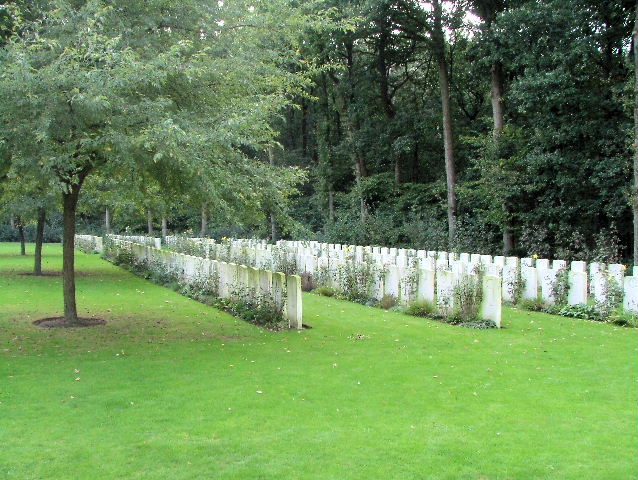Name
Albert Abbiss
Conflict
First World War
Date of Death / Age
29/03/1916
28
Rank, Service Number & Service Details
Private
429011
Canadian Infantry
7th Bn.
Awards: Service Medals/Honour Awards
Not Yet Researched
Cemetery/Memorial: Name/Reference/Country
BERKS CEMETERY EXTENSION
III. B. 20.
Belgium
Headstone Inscription
Not Researched
UK & Other Memorials
Pirton Village War Memorial,
St Mary’s Shrine, Pirton,
Methodist Chapel Plaque, Pirton,
Pirton School Memorial
Biography
Albert Abbiss was born in Pirton on November 16th 1887(*1) and was the son of Frank and Elizabeth Abbiss who lived around Great Green. Although the family were in Pirton in 1887 they are absent from the Pirton 1891 census, they were living in Village Street, Holwell, but present again in 1901 and 1911. Frank was a farm labourer and probably followed the seasonal work on local farms which may explain the family’s movement.
Their children were Annie, Albert, Rose, Thomas William and Alice(*2). The 1911 census confirms five children, but also records that one had died. It must have been Annie who died as she is absent from the later census records.
Albert is recorded on the Pirton School Memorial to the Great War, so we know that he attended the school. By 1901, and still just thirteen, he had left the classroom and was working as a ploughboy on one of the local farms. A few years later, probably in 1906 or 1907, he emigrated to Canada, but he seems to have returned for a period in 1910. Perhaps his visit also persuaded his brother Tom to emigrate as Edna Lake, from Victoria British Columbia, informs us that in 1912 five Pirton men, including Tom, emigrated to Canada together. The others were Albert William (Toby) Buckett, Edward Lake, Charlie Stapleton and one of the Walkers, possibly Arthur Robert Walker. Most settled in New Westminster, British Columbia and, perhaps surprisingly, during the time that Albert was there, he managed to return to visit Pirton three times. Once war had started, most of the Pirton men, who had emigrated to Canada, felt duty bound to return and defend their homeland and in all nine men returned, including Albert, Toby and Edward.
The Parish Magazine of September 1915 notes Albert as enlisting during 1915 before August. In fact it was on March 13th 1915 that he swore the oath; ‘I hereby engage and agree to serve in the Canadian Over-Seas Expeditionary Force, and be attached to any arm of the service therein, for the term of one year, or during the war now existing between Great Britain and Germany should last longer than one year, and for six months after the termination of that war provided His Majesty should so long require my services, or until legally discharged.’
Albert Abbiss was now in the Canadian Army as Private 429011, 7th Battalion, Canadian Infantry (British Columbia Regiment). His attestation papers help complete the picture of Albert. He was twenty-seven, 5’ 8” tall, had grey eyes and brown hair. He had been working as a labourer and was unmarried. His distinguishing marks were three vaccination scars on his left arm and a tattoo on his right, ‘THC’ over a heart, cross and anchor. His religion was given as Church of England.
By the time Albert enlisted, his Battalion had already been to Belgium and had moved to France and was serving with distinction. Albert would have gone for training and during that time the Battalion continued fighting in both Belgium and France. The date that he joined them, and the fight, is uncertain. The war diary only records two drafts of men being received; a draft of 5 officers and 262 men on May 6th 1915, but that would have been too soon for Albert who must have still been in training; the second entry records a draft arriving on August 28th. It is by no means conclusive, but the latter date certainly seems more likely.
A couple of days before August 28th the Canadians had received the new helmets, which were now being issued – a bit better for protection than the caps worn previously. They had returned to the trenches around the Grande Mungue Ferme in Belgium wearing them and probably feeling a little safer. That feeling might not have lasted too long as the enemy artillery was recorded as ‘very active’ and the diary notes that there were many casualties and German snipers were active all day. They were relieved and within a few days were repositioned on Hill 63. This was a very important part of the British line; Ypres could be seen in the distance, but the military significance was that it protected the railhead at Steenwerck and the main road running between Bailleul and Armentières. They spent September there, moving between the reserve and support lines and the front line trenches.
In October they entered the Le Rossignol trenches, which was not a surprise to the Germans as they welcomed them with shouts of “Hello Canadians” and, strangely “Wait till October 13th and you can have the damned war”. The Canadians spent the month there, recording significant enemy rifle and trench mortar activity in the periods when they were manning the trenches. Casualties at the end of the month were, one officer suffering from shock, 5 other ranks killed and 25 wounded. In November the trenches that they had moved to were in the area of the Douvre River, which was in flood and the trenches were badly affected. Both sides suffered and consequently the Germans were unusually quiet. To obtain information about the enemy’s defences, the battalion was ordered to supply an attack party as part of a two point attack, planned for the night of the 16th/17th. They succeeded in entering the German trenches, killing about 30 men and bringing back 12 prisoners. It would have been a total success had it not been for a man killed when a rifle was fired accidentally as a soldier tripped on the wire and another who was slightly wounded. The total casualties for November were light; 3 men killed, 4 later died of wounds and another 26 were wounded. From the next day to December 9th they were given time away from the front line.
When they returned to the fighting they were at Neuve Eglise briefly and then went back to Hill 63. The condition of the trenches had not improved, the river was still in flood, parapets were in poor condition and only isolated parts of the lines behind the front line were considered defendable. Every effort was made to drain the trenches, but with only limited success. The artillery bombarded the enemy lines, but that just drew retaliation and made matters worse. They were withdrawn for five days, returning on December 22nd to spend Christmas in the trenches, but at least Christmas Day and Boxing Day were quiet.
Between January and the beginning of March Albert and his Battalion improved the conditions by hard work. They also continued to hold the familiar trenches at Hill 63 and spent time resting, training or working in the Divisional Reserve at Grande Munque Farm and Bulford Camp. Late February was particularly cold with snow followed more by rain. During this time the German activity seems to have been restricted to artillery shelling and rifle fire and casualties were very light.
The diary records little in the way of activities before Albert’s death on March 29th 1916. There were only general movements between camp and trenches. In fact there is no entry for the 29th, but on the 28th they had moved out of the front line to Bois de Boulogne. The only details of his death come from a newspaper report, which confirms that he was not in the front line, but billeted and being held in reserve when a shell landed on a road quite close by and killed him.
On April 2nd just four days after his death, the Rev. Louis W Moffit, one of the chaplains, wrote to Albert’s mother. Some of the text of that letter was reported in the local paper(*3) and that report appears here. He wrote that “It will be a little comfort to you to know that he was instantly killed and did not suffer”. Sadly, while it may be true in this case, the expression is one that seems to appear in almost every such letter sent from the Front and was often just a kindness to the ones left behind.
The report records that he was buried in the Battalion cemetery on the slope of Hill 63 near Plug-street Wood - actually Ploegsteert which was another British colloquialism replacing the difficult local pronunciation. It seems likely that Albert’s body was moved from the original location to the Berks Cemetery Extension where he now lies.
This cemetery is about eight miles south of Ypres and was not the location of any major battles, but rather the ‘normal’ trench warfare – shelling, sniping, small scale skirmishes. In spite of this, the cemetery and its extension, where he lies, holds 876 graves and the impressive open roofed memorial remembers 11,000 Commonwealth servicemen who died in the surrounding area and who have no known grave.
(*1) 16th on his Attestation papers, 9th in other sources
(*2) Annie (bapt 1884), Albert (b 1887), Rose (b 1891), Thomas William (b 1893) and Alice (b 1896).
(*3) The newspaper article refers to Alfred not Albert, but this is a misprint.
Acknowledgments
The Pride of Pirton book – www.pirton.org.uk/prideofpirton Chris Ryan / Tony French / Jonty Wild



